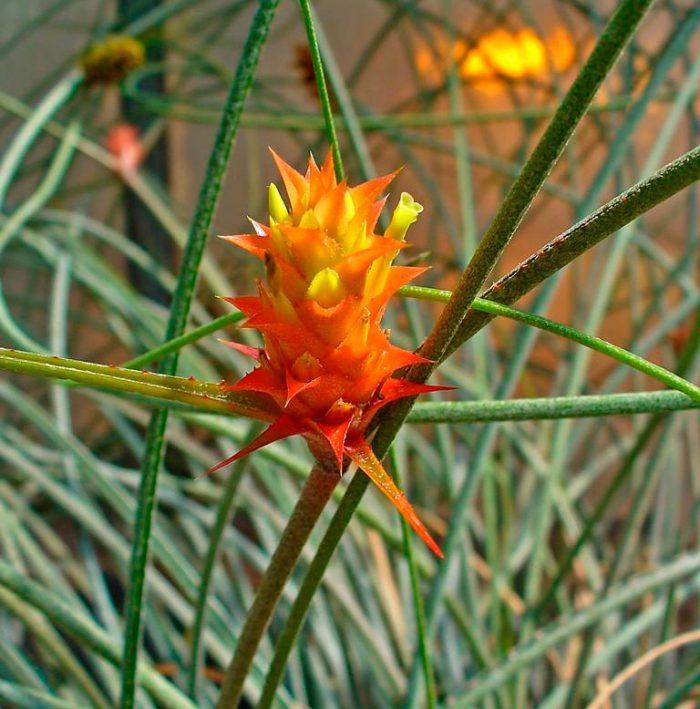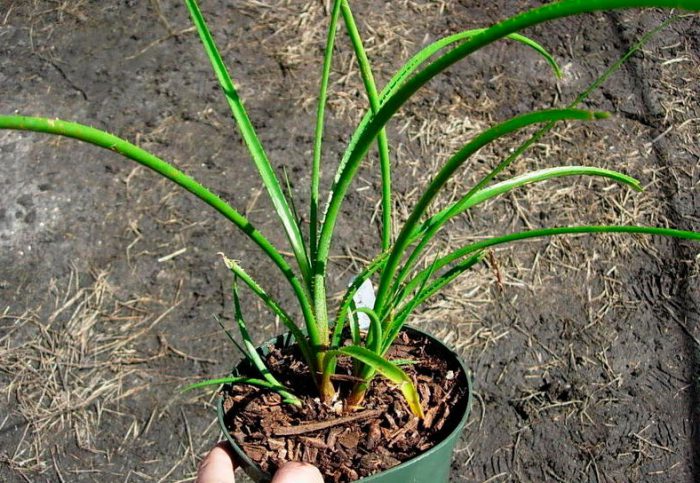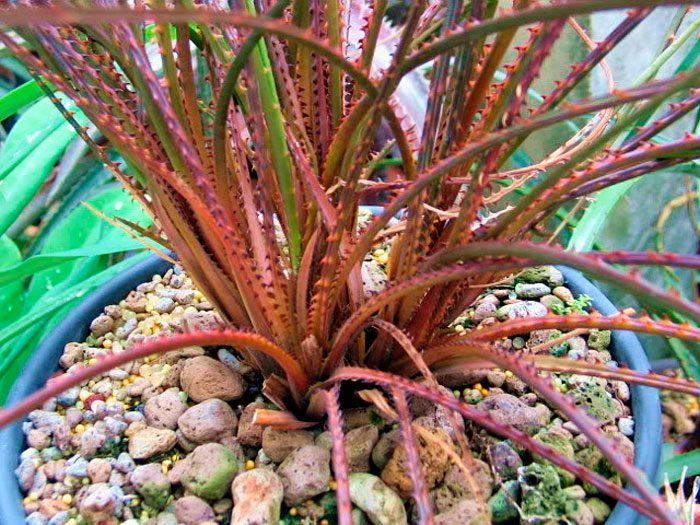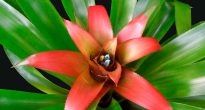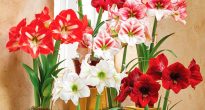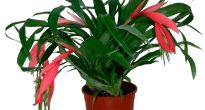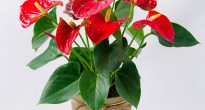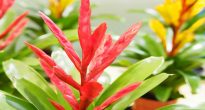The herbaceous plant Acanthostachys is quite large and belongs to the bromeliad family (Bromeliaceae). This plant comes from the subtropical and tropical forests of South America.
The name acantostachis is derived from the Greek words acantha - thorn and stachys - ear.
Such a large perennial plant is rosette; there are numerous thorns at the edges of narrow leaves. Flowers grow from the leaf outlet. Spacious cool rooms, greenhouses or winter gardens are suitable for growing them. Suitable for growing as an ampelous plant.
Content
Home care for acanthostachis
Illumination
This plant needs diffused light, while it calmly tolerates slight shading. Protect acanthostachis from direct sunlight, as they can cause burns, resulting in pale brown spots on the surface of the leaves.
Temperature regime
In spring and summer, such a plant feels best at temperatures from 20 to 25 degrees. With the onset of the autumn period, the temperature should be reduced, but this should be done gradually. In winter, move it to a cool place (14 to 18 degrees).
Humidity
High air humidity is needed, in this regard, experts advise to regularly moisten the foliage from the sprayer. To do this, use soft water at room temperature.
How to water
In the spring and summer, watering should be systematic. With the onset of autumn, watered less, and in winter - moderately and only after the top layer of the substrate dries well. The plant reacts equally badly to the drying out of the earthen coma and to the stagnation of liquid in it. Watered with extremely soft water at room temperature.
Top dressing
Top dressing is carried out in spring and summer 2 or 3 times a month. For this, mineral fertilizers are used. In winter, top dressing cannot be applied to the soil.
Transplant features
It is necessary to transplant such a plant if necessary. Due to the fact that in the wild such a plant can grow as an epiphytic one (on trees), then a piece of tree bark can also be used when grown indoors. A lump of earth must first be wrapped in sphagnum, and then fixed with wire on the surface of the bark. It is also grown as a potted plant.To do this, a relatively small pot should be filled with an earth mixture consisting of 2 parts of humus, 4 parts of leafy soil, 1 part of small expanded clay and 1 part of the bark of coniferous trees.
Reproduction methods
Can be propagated by lateral baby stems, as well as by seeds.
First, the seeds are immersed in a weak solution of potassium manganese for a while, and then dried. Sowing is carried out in crushed moss. The container must be closed with glass and placed in a place with a temperature of 20 to 22 degrees. Requires systematic ventilation and humidification from the sprayer. After the first leaves appear, the shelter is gradually removed. Planting in small pots is carried out after the appearance of 2 or 3 leaves.
The lateral baby stems should be carefully separated from the mother plant. They are treated with charcoal and allowed to dry in the open air. Then they are planted in a substrate consisting of peat, leafy earth and sand. Put in a place with a temperature of 20 degrees. Frequent spraying of foliage is needed, and watering is done after the topsoil has dried.
Diseases and pests
Can settle shield and mealybug.
The plant, as a rule, is sick due to improper care:
- There are brownish specks on the tips of the leaves - low humidity, water the plant with hard water;
- The leaves dry up - low humidity, water the plant with hard water;
- Pale brown specks on foliage - a burn left by direct sunlight.
Main types
Acanthostachys pineal (Acanthostachys strobilacea)
This herbaceous rhizome plant is a perennial. In height, it can reach 100 centimeters. Narrow, drooping leaves are part of a loose rosette, and they are painted in a greenish-silver color. There are thorns on the edges. Forms many side shoots, due to which it grows very much. Bloom is observed in July-October. The reddish-orange pineal compound fruit is formed. It looks like a pineapple.
Acanthostachys pitcairnioides
This herb is a perennial. Its leaves are colored dark green and have large red thorns at the edges. Blue flowers grow from the base of the leaf rosette.

